How to Remove Joint Compound?
Easy and quick methods of cleaning your wall
Installing drywall is not only the effort- and time-consuming process, it is also quite a dirty process! After the drywall is installed, you usually end up with quite a lot of debris and dust that need to be cleaned. And since painting comes last in most of the home renovation projects, your sheetrock will be one big mess in the end!
And since drywall is faced with paper that is not quite water-friendly, you can’t just wipe the sheetrock surface with a wet sponge or a cloth. But what shall be done then, you may wonder? Today we will explain how to remove drywall joint compound from your walls safely to keep the walls clean and without a single scratch.
How to Remove Joint Compound From Walls?
There are several distinct methods of how to remove too much fresh joint compound. The simplest way to do this is to apply warm water onto the wall that needs to be cleaned. Simply wipe it with a cloth soaked in water, and all the mud and debris must get off the wall quite effortlessly.
However, if this is not an option and it seems that you are dealing with quite a stubborn joint compound that doesn’t want to get off the wall that easily, feel free to opt for a harder means of removal. For example, you can try to scrape the wall with a scraper or a putty knife to remove the compound. Or simply take it off with a sanding machine if there is a layer of dry paint on top of the joint compound!
However, in order not to be unfounded, we want to introduce you to all the possible methods of cleaning the drywall joint compound off the wall. Read attentively and choose the approach that suits your particular situation better than others.

Housekeepingbay.com
Scrub It Off Using Water
Since drywall joint compound normally breaks easily in water, using this liquid is the simplest and the most obvious way of cleaning your wall. However, it can be successfully used only on the surface that is not painted yet since paint tends to shed water!
But if you are dealing with a wall that only has drywall joint compound applied on it, using plain water may help very well. It will get soaked into the drywall mud pretty fast and dissolve the glue-like bond of the hardened joint compound. Of course, if you have to work on larger blobs of the drywall mud, let the water get soaked into them for a few minutes so that the mud could easily be broken down.
Like this, you will be able to relatively easily clean that sheetrock joint compound off the surface no matter whether those are walls, floors, or anything else that is flat and hard.
The additional benefit of this method is that you don’t need to make use of any harsh chemicals, solvents, or specific tools to clean the walls. Just a bucket of warm water and a cloth! This is why this approach is considered the safest and the easiest among all the existing ones.
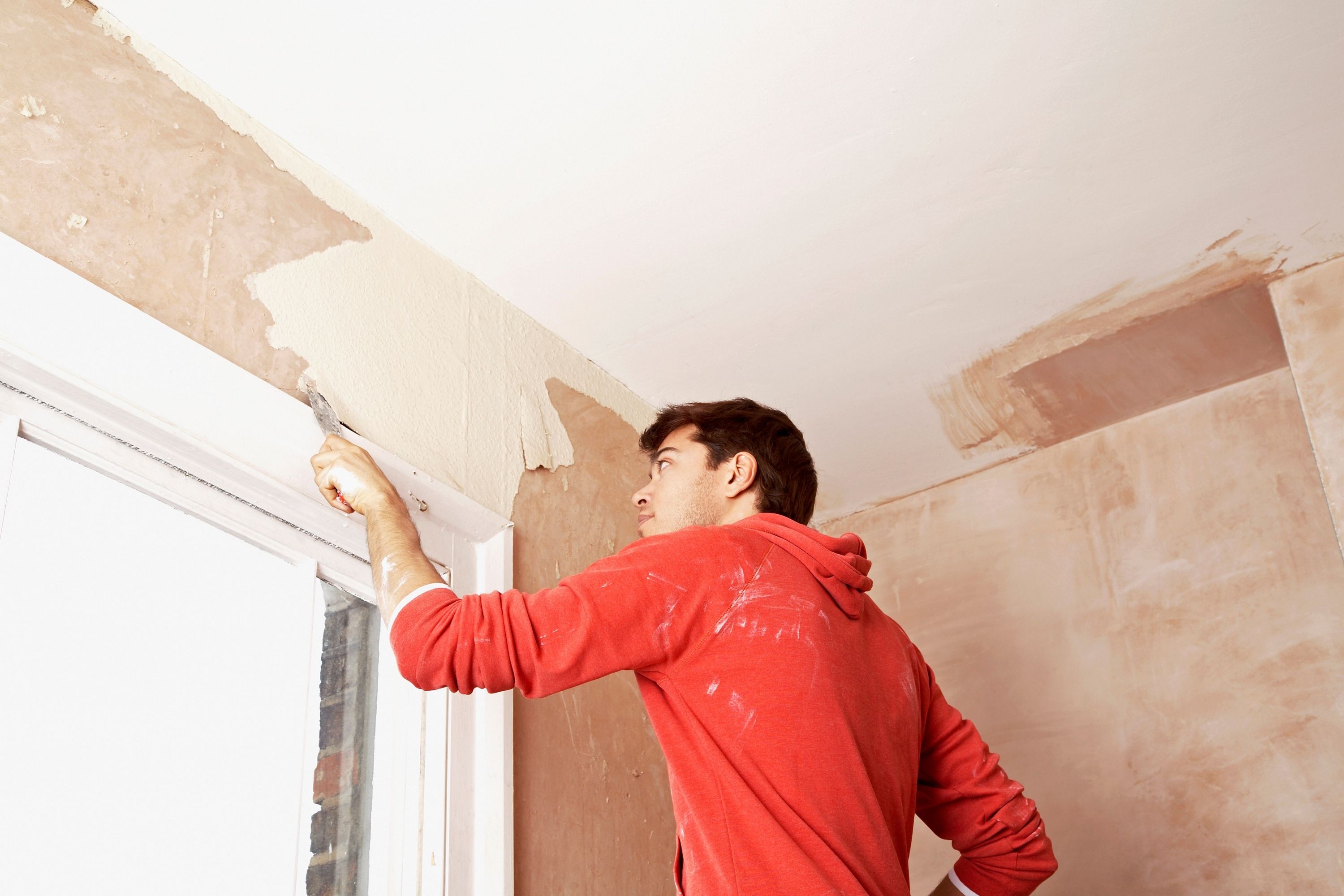
Credits: moodboard, via Canva.com
Table of Contents
Go For a Scraper
All right, using water is the most obvious and the simplest way of removing drywall joint compound from the surface that needs to be cleaned. But what if your task is a bit more difficult? What if that joint compound already dried hard?
Well, in this case the challenge will require some time and elbow grease from you! To deal with hardened drywall joint compound, you will need to scrape it off as an option. For this purpose, you can easily make use of either a scraper or a mere drywall putty knife.
Just use the blade of your scraper to bust through the hardened drywall joint compound and scrape the surface down to a smooth finish. In case any of the drywall paper is damaged (even a little bit), you will have to patch it with additional joint compound before repainting, take that into consideration!
By the way, this method will also work best of all if your wall or another surface has not been painted yet! And if you need to speed up the drywall joint compound removal process, feel free to combine the scraping method with the water-cleaning one. Like this, the job will go much faster!

Credits: pundapanda, via Canva.com
How to Avoid Wall Damage When Scraping?
When we use scraping tools, such as a putty knife or a scraper, on a drywall, there is always a risk of leaving marks and scratches on the surface even if we have no such intentions. In addition, you can accidentally remove the drywall paper along with the joint compound.
Naturally, a scratched wall does not look nice much, besides, painting such a surface may be quite difficult later, and the paint will not attach smoothly.
This is why you need to be aware of a few easy preventive tricks that will protect your surface from any flaws and damages:
- Make use of a utility knife to cut through the drywall paper just around the circumference of the dried joint compound.
- Be careful and cut through the paper layer only! Make sure you don’t cut through the drywall itself!
- Once you are done with cutting, make use of your scraper for peeling off the joint compound and the paper together.
- After the drywall is finally removed, patch it with a skim-coating of joint compound.
This method works especially well when you need to scrape off large chunks of dryed drywall joint compound to clean the unpainted walls. Thanks to it, you are always able to keep the amount of damage done under your personal control. As a result, it will always be possible to fix any drywall paper issues relatively easily and quickly.
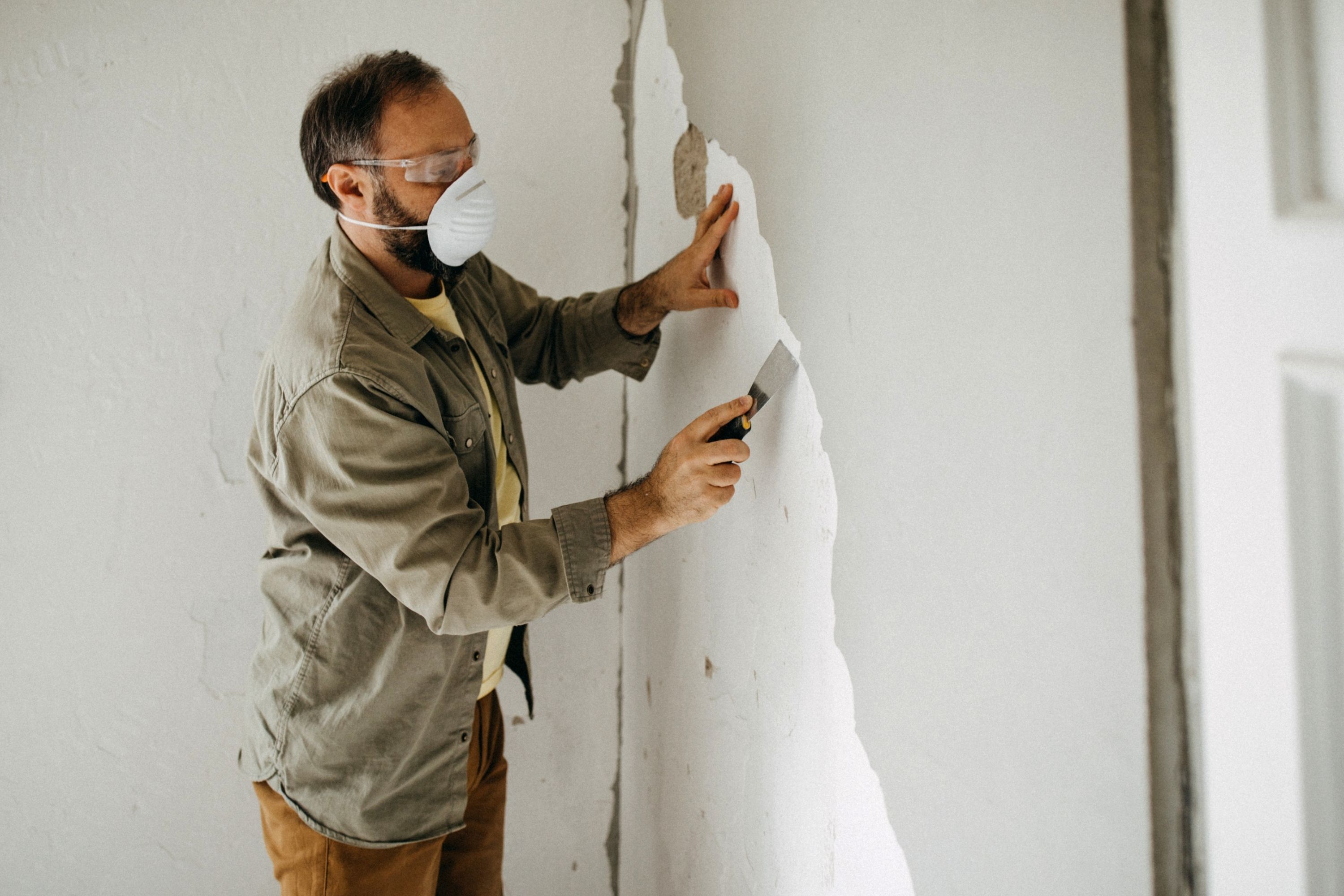
Credits: eclipse_images, via Canva.com
Opt For Sanding
Sanding is the ideal solution if you need to remove the layer of drywall joint compound that was applied and later painted. Since paint is water-resistant and it will hardly react much on scraping (and even if it does, you will spend a hell lot of time on that!), using an electric sander is your only option.
Why use an electric tool, you may ask? See, it does not matter whether you need to simply fix one particular lumpy painted area, or you need to work on the entire wall, you will anyway have to sand through the layer of dry paint and then through the drywall mud (also dried) to be able to achieve smooth and even walls. No need to explain that it can hardly be done simply manually with a mere scraper!
So to sand your walls this way, we recommend you use an orbital electric sander for removing the drywall joint compound from the surface that is painted. All you need to do is to sand through the mud starting with a coarse sandpaper for removal (better stick to 80 or 100-grit one). Then, after the initial paint removal is finished, switch to a finer sandpaper, let’s say, 120-grit one.
There is one more essential nuance you must always keep in mind when sanding a drywall. This process is followed by clouds of drywall mud dust. So remember to wear a protective mask to not inhale those tiny particles of joint compound.

Give Latex Paint Remover a Try
We agree that the methods described above, especially those that imply the use of a scraper or an electric sander, are pretty dusty and messy. This is why, if you don’t feel like tidying after you cleaned your drywall, try out a commercial paint remover.
This product will easily cope with latex paint letting you get to the joint compound. And afterward, you will be able to make use of one of the previous approaches to complete the task.
See, when you apply latex paint remover first, you don’t need to use sanding for stripping the paint off. That’s the first benefit of this approach. Also, latex paint removers make it easier to proceed with the drywall cleaning since you will simply have to clean the exposed drywall mud by using either water or scraping.
However, if you are not sure whether your walls are painted with latex paint or any other type of paint, better opt for sanding at once in order not to create an even bigger mess.
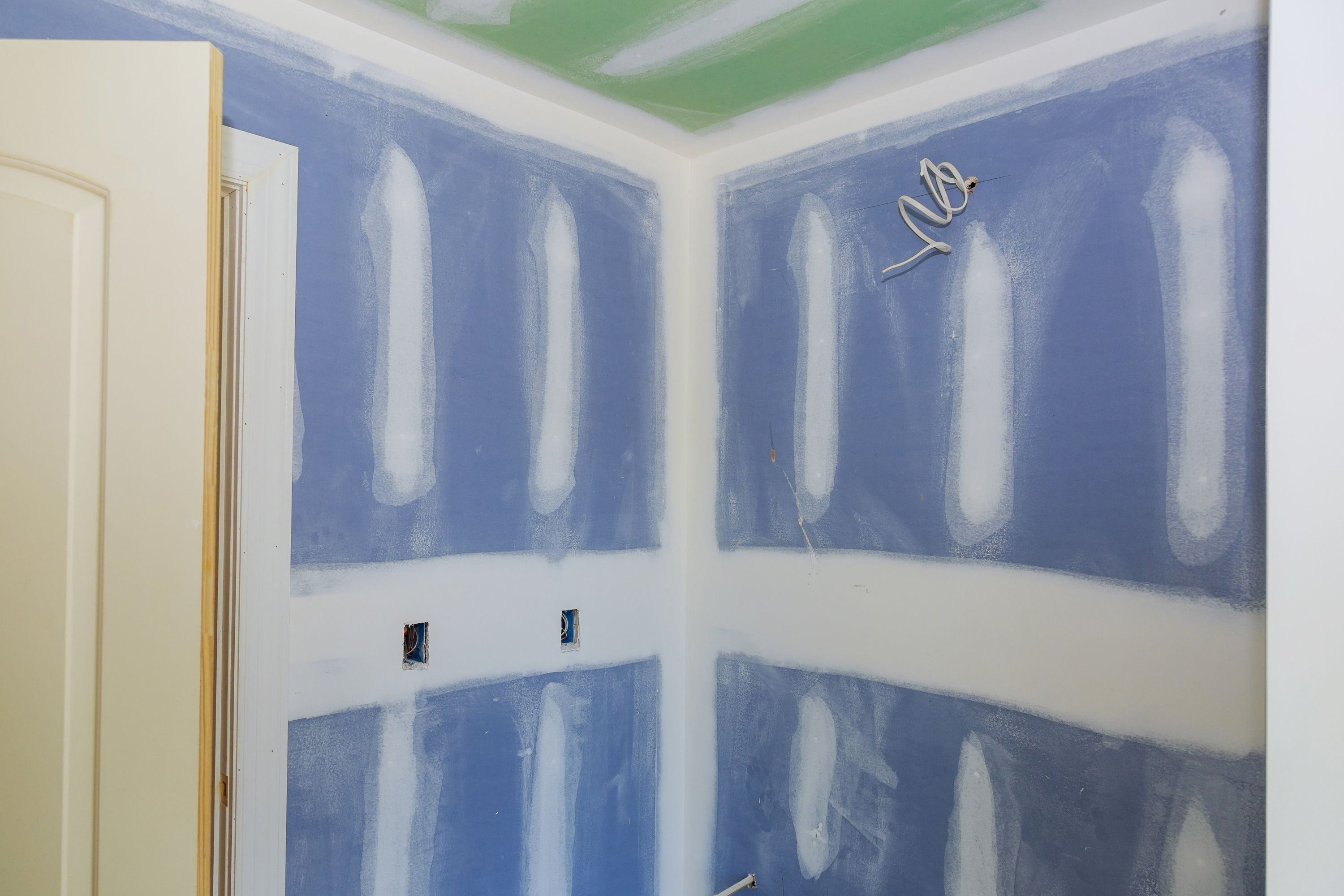
Credits: valentynsemenov, via Canva.com
Make Use Of a Utility Knife
When dealing with large pieces of drywall joint compound, try to use a utility knife. Wedge the corner of your knife under one edge of the drywall mud deposit and pry it off the wall or the surface you are working with. It may, however, take some drywall paper with it, but since the edges were scored, they should be safe and not ragged. However, if there is any paper hanging loose, simply cut it off with the utility knife.

Credits: LordRunar, via Canva.com
A Floor Scraper May Help
This method is similar to the one that uses a drywall putty knife, but there are still some minor distinctions. To use this one, you need to start with wetting the wall using a pulverizing bottle. Start with a small area and wet it thoroughly.
After the water soaked into the wall, take a floor scraper and, holding it at 30 degrees angle against the surface, scrape the drywall joint compound off.
So these are the most frequently used ways of removing drywall joint compound from walls and other flat and hard surfaces it was applied onto. No matter why you want to clean the sheetrock mud off. You may just not be satisfied with how it looks on the wall before or after painting it, or you simply need to make it clean. Use any of them depending on how hard you are ready to work and how fast you want your surface to be cleaned.

Credits: AlexKosev, via Canva.com
How to Dissolve Drywall Mud?
When you need to clean your drywall joint compound off the surface, you may be wondering about what can dissolve it. Fortunately, if your wall is not painted yet, you can easily soften the drywall mud by simply applying water to it.
Dried sheetrock joint compound breaks down easily when being wet. Since it is not painted, it will not shed water meaning that it will penetrate the drywall mud easily and dissolve the bonds of the hard mud.
Like this, it will be later quite easy to clean that softened mud off any surface whether it is a wall, a floor, or anything else. And since this method requires no chemicals (e.g. solvents or harsh removers), and it is quite easy to be done manually, people mostly prefer trying it rather than proceeding with the more difficult alternatives.
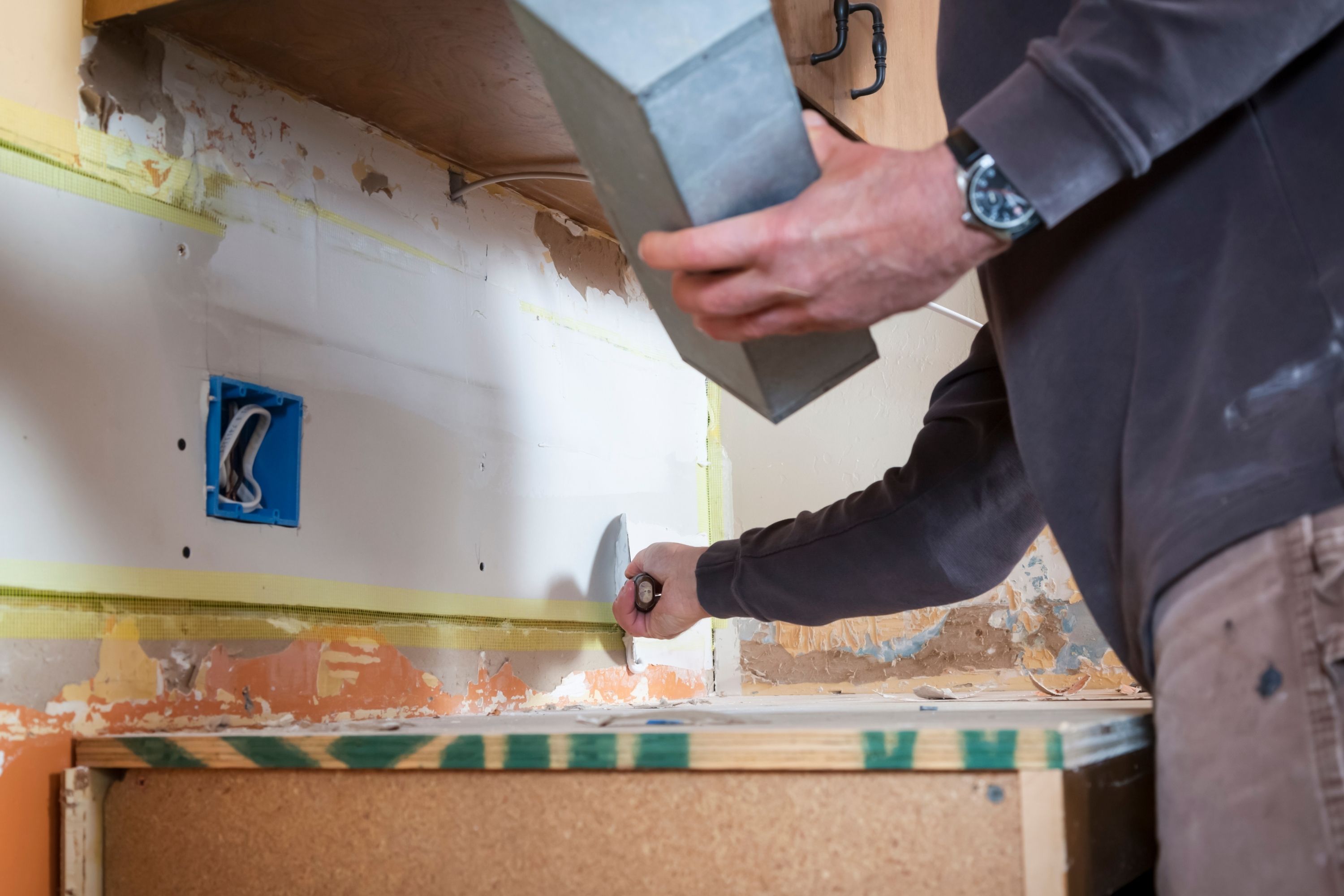
Credits: Bill Oxford, via Canva.com
Prevent the Mess Even Before It Starts
Drywall joint compound is a rather difficult thing to clean once it gets dry. This is why, it is strongly recommended to follow the basic “safety” rules that will help you to keep the working space and yourself clean while working with this substance.
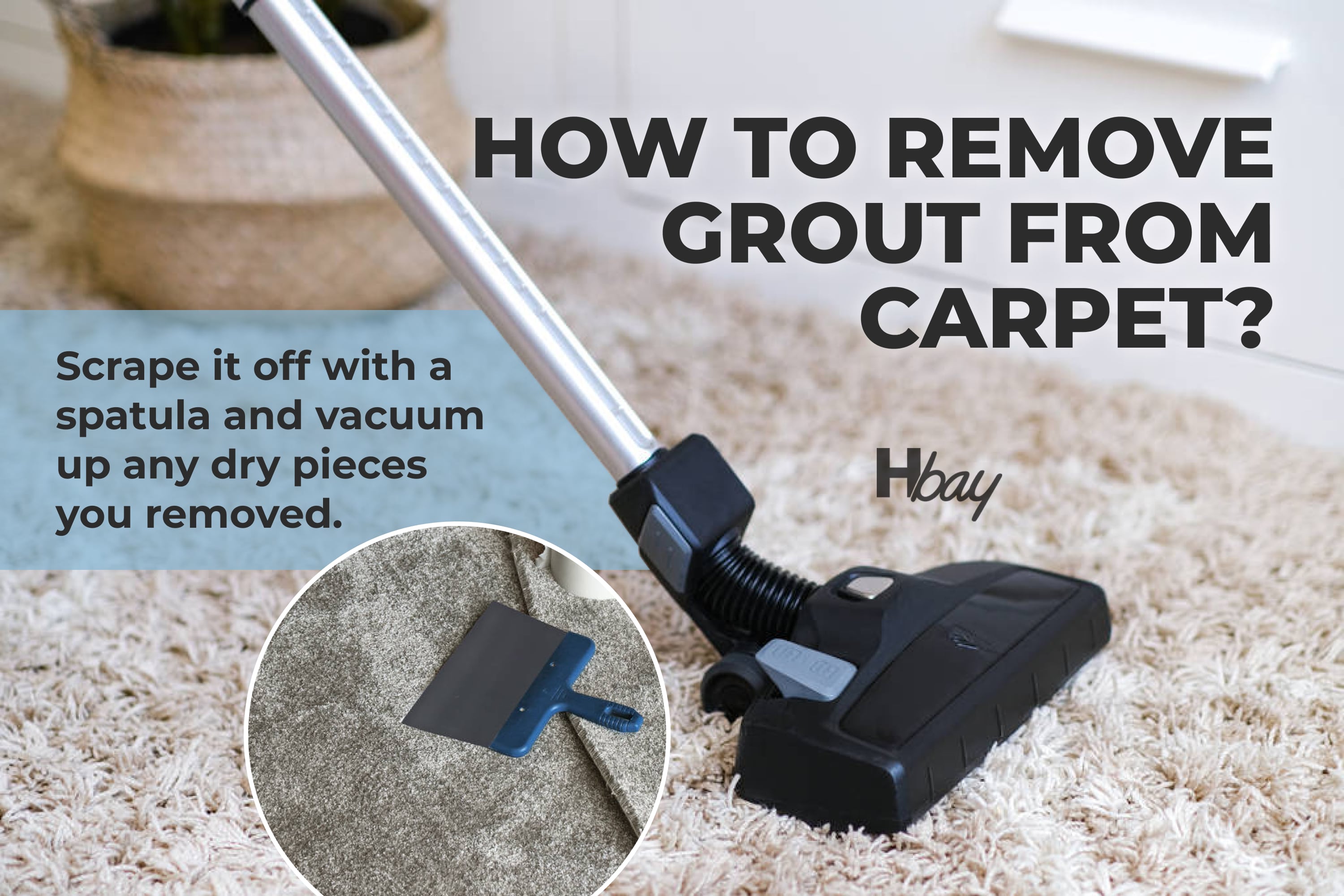
housekeepingbay.com
- Use a drywall mud pan. You will be surprised how much easier it is to work with this substance when using this item!
- Take it easy with mud. Avoid applying too much so that the layer is not excessively thick. Remember that the more mud you apply, the more you will have to scrape or sand off later!
- Cover surfaces. Like this, you will protect your furniture from drywall joint compound blots.
If you adhere to these recommendations, it will be much simpler for you to clean the mess up if, for instance, a few drywall mud spots will end up on your furniture or other surfaces they do not belong to. You will have to simply use some warm water to make things clean and tidy again!
With these tips and information in mind, you can be sure that working with drywall mud will never cause you troubles or inconveniences anymore.
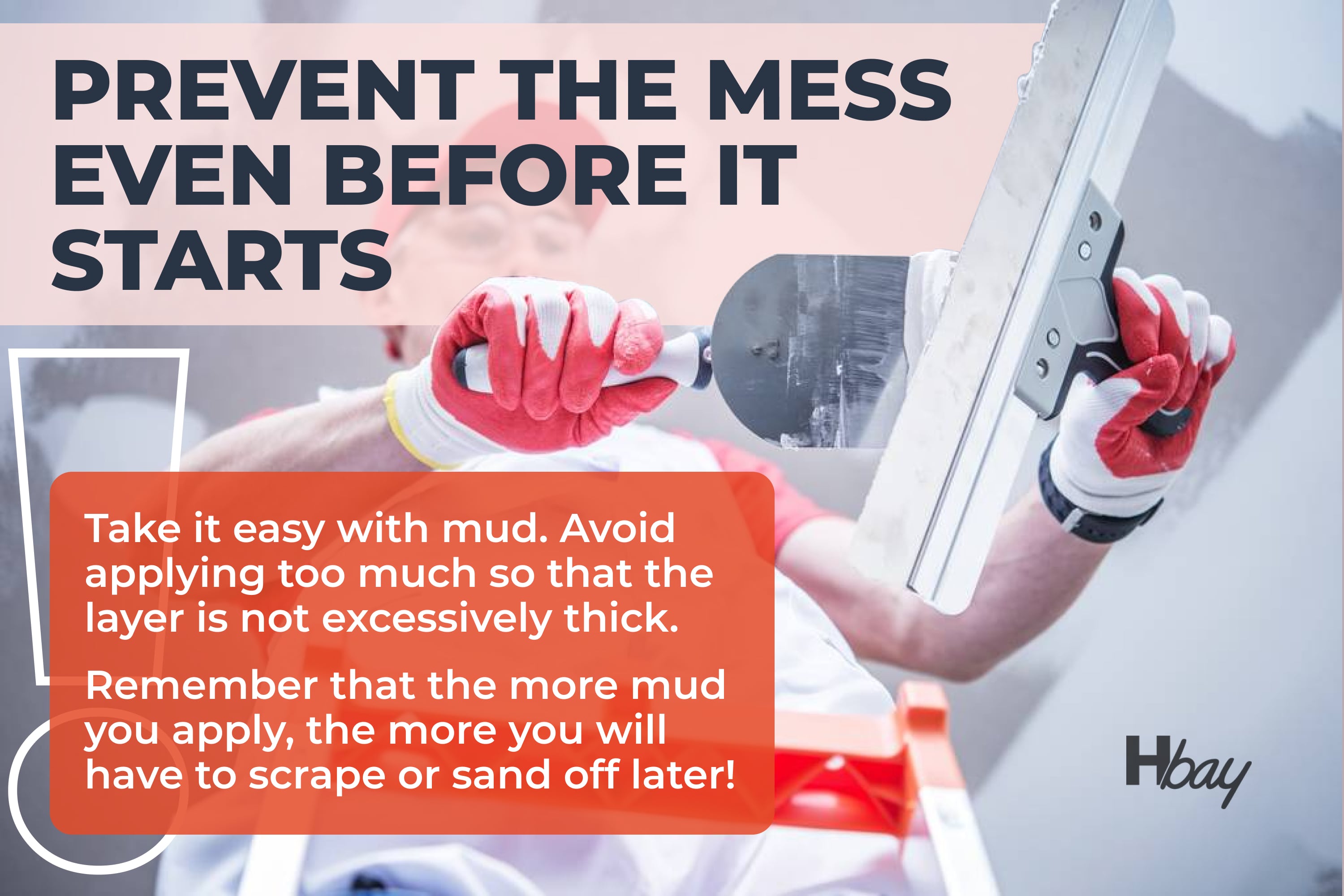
housekeepingbay.com
Ever wished paint sampling was as easy as sticking a sticker? Guess what? Now it is! Discover Samplize's unique Peel & Stick samples. Get started now and say goodbye to the old messy way!
Get paint samples




Frequently Asked Questions
⭐ How fast does drywall mud dry?
Usually drying time is 24 hours.
⭐ How to remove a joint compound from carpet?
Scrape it off with a putty knife and vacuum the dry pieces that you removed.
⭐ How to remove air bubbles from a joint compound?
To fix those bubbles, you will have to apply three coats of joint compound with adding a bit of dish soap and water into the mud used for the last coat.
18 thoughts on “How to Remove Joint Compound?”
Leave a Reply

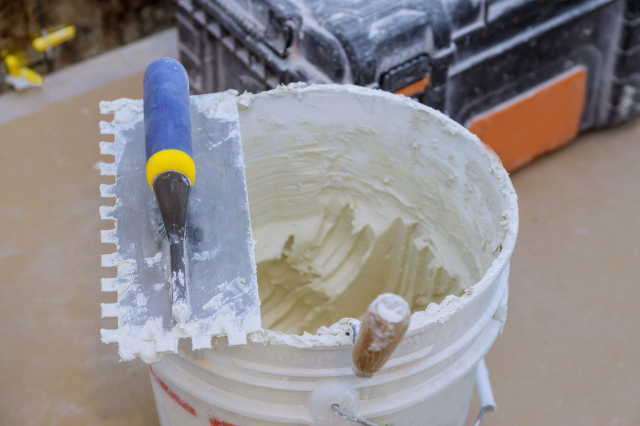
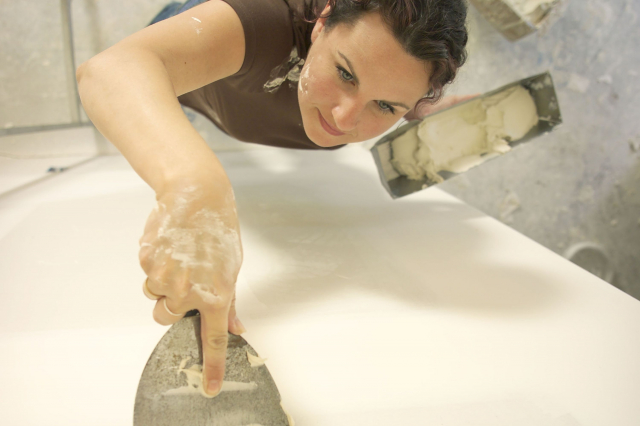

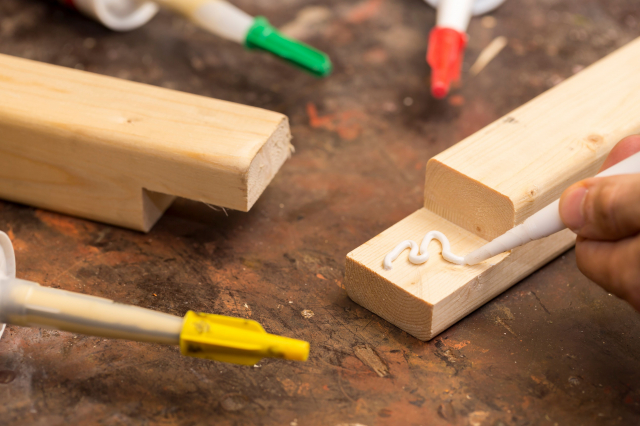
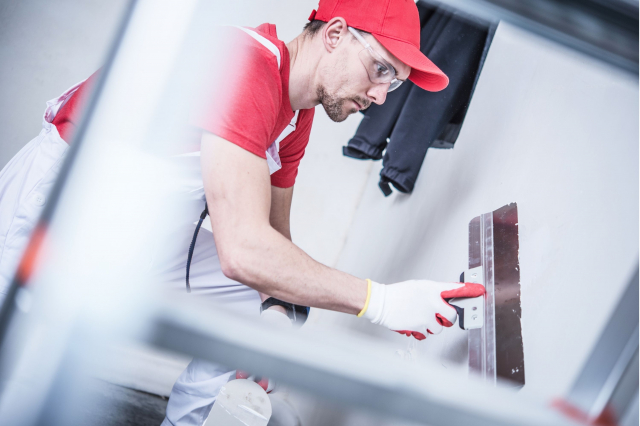


Hello. Could you please explain how to clean up drywall dust from a concrete garage floor?
Can anyone tell me how to remove drywall compound from wood floors, please? What products to use to not cause damage to the wood?
If the compound is still wet, wipe it off first. Then, you will need an anti-mastic or adhesive remover to apply it over the affected area/areas. After leaving the product for 30 minutes, you can remove the softened compound.
I must be very messy person, but when I was preparing a drywall compound, I ended up with a lot of drywall dust on the walls. Do you guys know the best way to clean up drywall dust off walls?
I guess you can use regular household tools. E.g., if the dusted are is not big, use a tack cloth to lightly wipe off debris. On larger areas, brush the dust off the walls with a soft broom or hand brush. FInally, if you heavily dusted your walls, you might want to use a shop vacuum.
While I was applying drywall mud, I stained my boots. Could you please tell me what dissolves drywall mud and doesn’t damage rubber boots? Thanks!
I guess you can try warm water. If you want, add some soap to it. Since your boots are rubber, you can immerse them into this soapy solution and left in it for a while. Warm water will soften the compound and you will quickly brush it off either with a nylon brush or using a scraper.
Does anyone know how to remove joint compound from a ceiling?
I guess this kind of work should be performed by a professional. It’s easy to cause damage to your walls if you press the tool too much while removing the compound.
I accidentally spilled some drywall compound on my concrete floor. Does anyone know how to remove dried drywall mud from concrete safely?
If your concrete surface is finished, use a plastic scraper to remove drywall mud. If there is drywall residue left afterward, you can remove it from concrete with a long-handled scrubber dipped in hot, soapy water.
How to remove joint compound from floor if the substance has already dried a bit?
Well, if you can still wipe some of it away, do that while the compound hasn’t hardened completely. Then, since your compound has partially dried, pour an adhesive remover onto the affected areas where the spill occurred. After half an hour, the hardened compound should siften enough for you to scrape it off with a putty knife.
Consider finding a different photo than the Lordrunar photo of a worker on top of an unsecured pallet on a rolling scaffold. This is promoting an unsafe practice, putting the worker unnecessarily at risk to gain more height.
How to remove a joint compound from wood? A few splashes ended up on my wooden dinner table when I was mudding the walls. They are almost dry now so maybe I could try to wash them off?
I’d not recommend using water on wood since it will damage the material. Instead, try to use an adhesive remover or an anti-mastic remover instead. It will have to sit on the blot for 30 minutes to soften the compound, but then you’ll be able to easily scrape it off with a dull plastic knife.
Hi! Do you guys know how to get rid of the dry joint compound that’s stuck to the bathroom sink? I tried wiping it with warm and then with hot water, but it’s still there!
Maybe, you should also use soap, not just plain water? Anyway, if soapy water also fails, you can always get it off with a scraper. Only use it carefully to not scratch the surface of the sink!